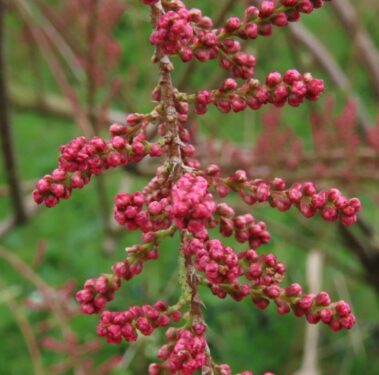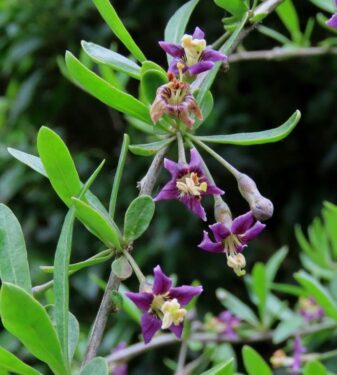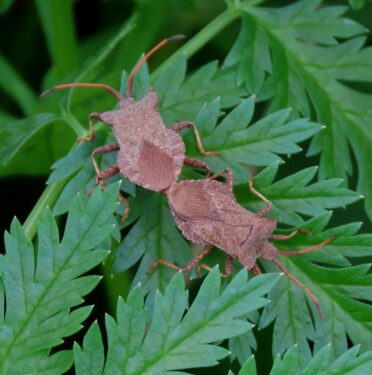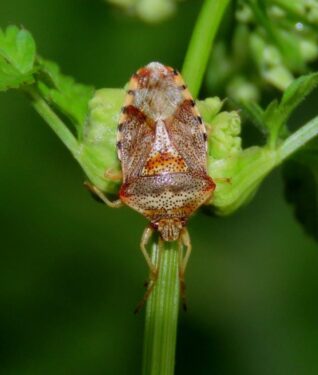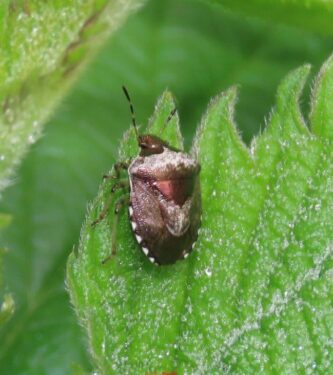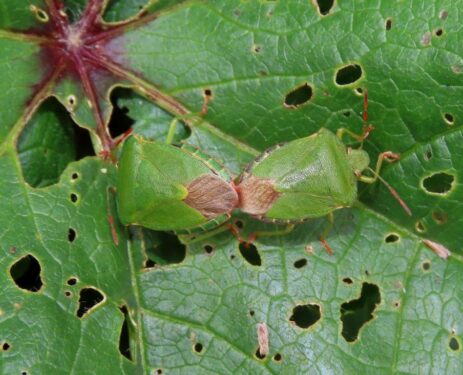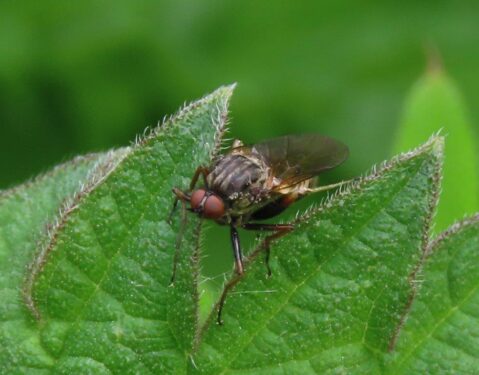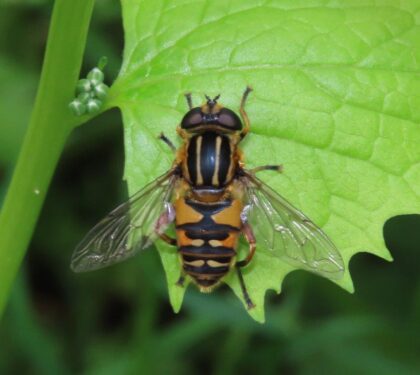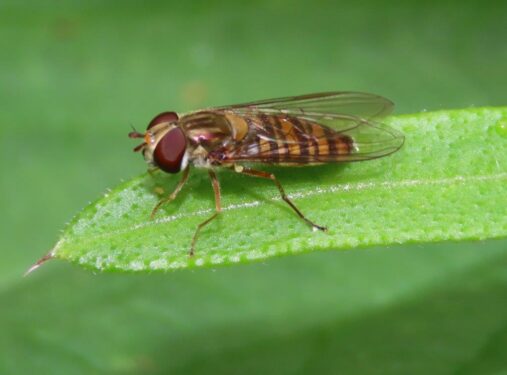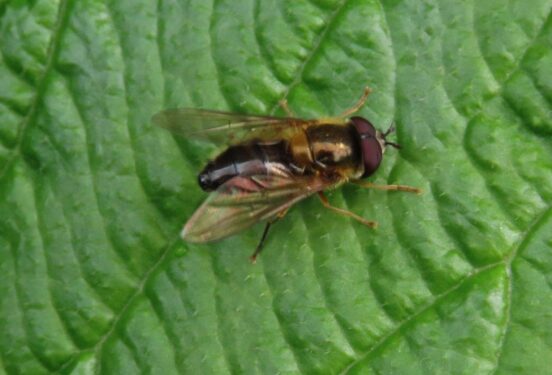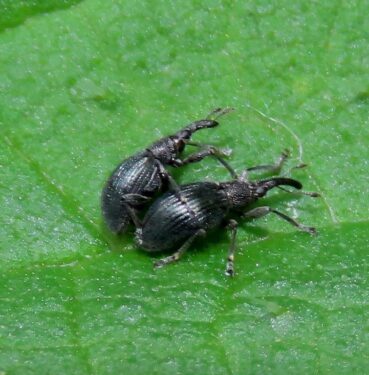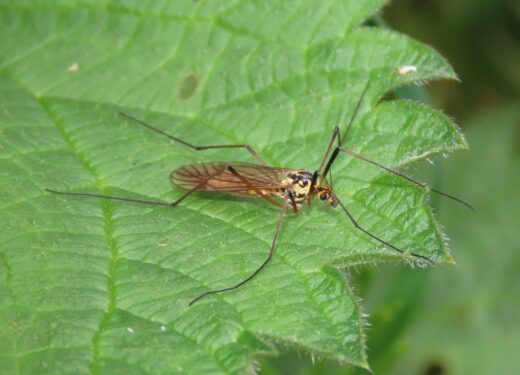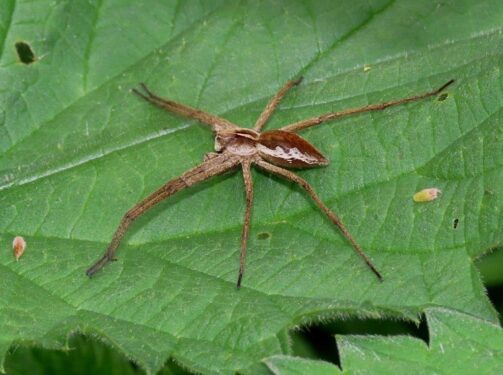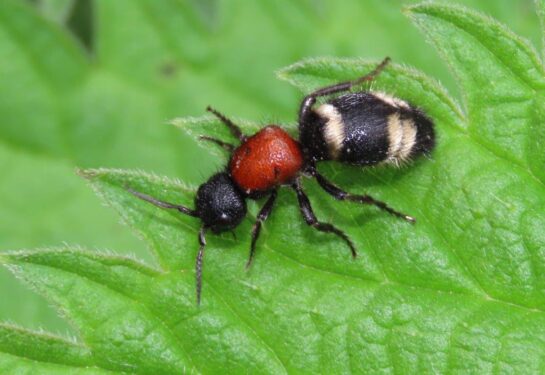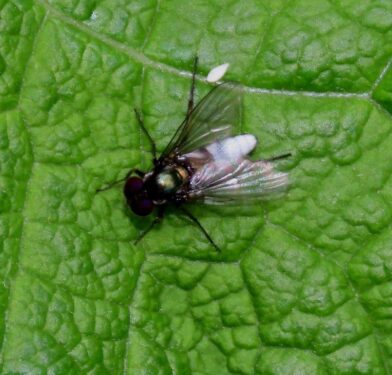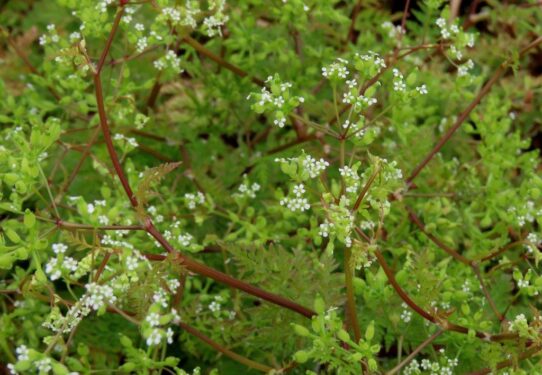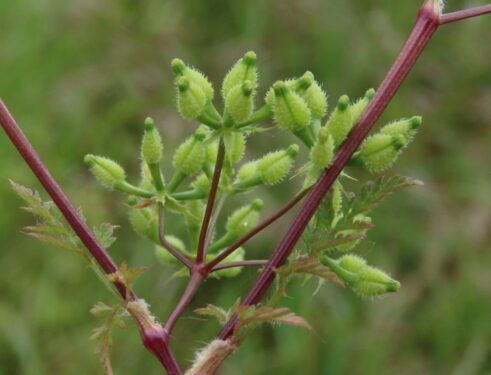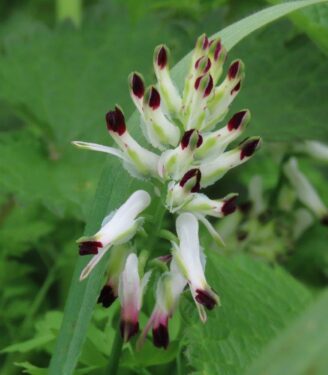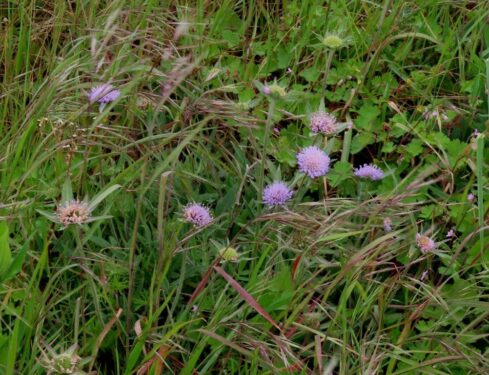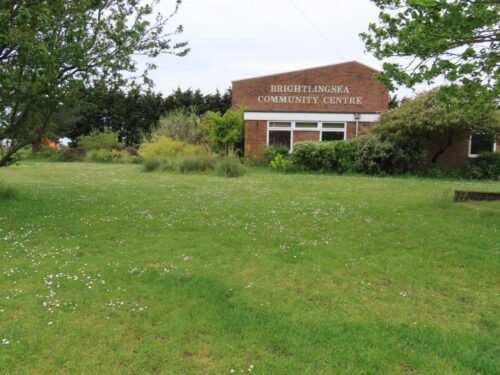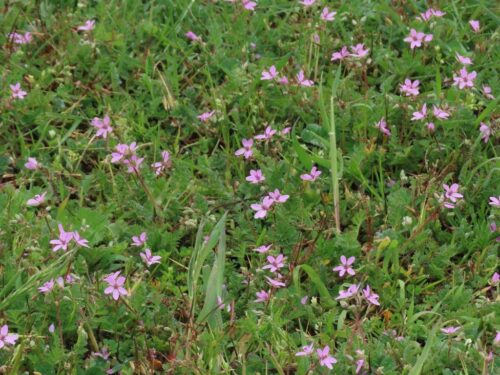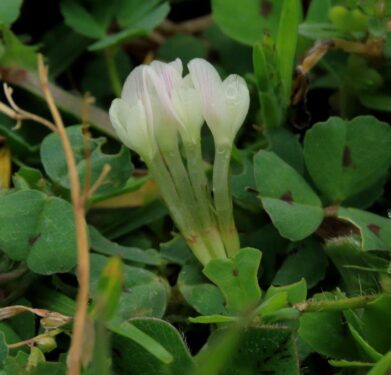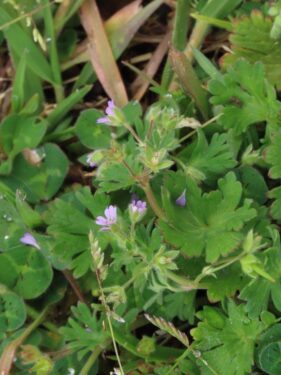As a recce for our new series of #WildBrightlingsea walks coming up (sadly tomorrow’s is postponed because of potentially dangerous winds), we headed there today. Only a short distance from Wivenhoe, it is more maritime in nature, with Tamarisk already looking its best, before the flowers actually burst open and the coral tones are diluted, and Duke of Argyll’s Tea-tree is now well into flower.
With winds rising in anticipation of the spring storm, some sheltered areas were teeming with insects, many of them getting into the summer of love, to the fragrant accompaniment of Hawthorn and Cow Parsley, the very embodiment of May. Dock Bugs were abundant on Hemlock, presumably insensitive to the toxins that render it so poisonous to us.
A selection of the other insects and invertebrates we found included Parent, Woundwort and Green Shield-bugs…
… a selection of hoverflies and dance-flies…
… along with weevils, crane-flies and Nursery-web Spiders …
… and finally, the stars of the day, a Large Velvet Ant and the fly Argyra diaphana, both pretty uncommon in Essex and the former also Nationally Scarce.
One thing that struck us as we walked around the town is that the benefits of reducing mowing may be gaining traction: a grassy bank opposite the Lido has masses of Bur Chervil (a rather scarce, largely maritime plant), and also White Ramping Fumitory and surprisingly early flowering Field Scabious. Whoever manages it, well done!
